 Announcing a new direction for The Traders Journal. Since 2012, I’ve been delving into my own trading journals every week and sharing with my readers what I found there. I will continue to do so, but on a bi-weekly basis. My revised plan is to alternate that with a new feature that I’m calling “Charts I’m Stalking”.
Announcing a new direction for The Traders Journal. Since 2012, I’ve been delving into my own trading journals every week and sharing with my readers what I found there. I will continue to do so, but on a bi-weekly basis. My revised plan is to alternate that with a new feature that I’m calling “Charts I’m Stalking”.
This change is a direct result of visitors to my office who always ask me what I’m currently looking at on my computer screen. This past weekend, when my son Grayson queried me with this very question, I happened to be in the midst of an asset allocation rebalancing effort. I’ve sermonized about the importance of this same topic before in my blog and in our book. Over the past 25 years, I’ve benefited immensely by my consistent focus on making certain that my assets are working on my behalf in the most appropriate asset baskets. I’d like to encourage you to do the same.
Last year, when I did another one of my thorough “retrospective reviews”, I was once again struck by the impact that asset allocation has on my investing year-end bottom line. So much so that when I shared the results with Grayson, he suggested we do a seminar and present the cold hard facts to show other investors of its importance. We did precisely that, and the seminar is now available on DVD.
http://store.stockcharts.com/collections/dvds/products/how-to-master-your-asset-allocation-profile
Back to the new “Charts I’m Stalking” format. Let me present a simple, albeit accurate, example which illustrates my approach in rebalancing asset baskets.
Let’s assume your entire portfolio is totally comprised of the Sector SPDR ETFs. Remember, this is for illustrative purposes only. Such a portfolio does not represent a prudent global allocation. Having said that, let’s also assume that your position in the Technology Select Sector SPDR (XLK) had appreciated over the past two years such that your percentage allocation needed to be reduced. In other words, XLK needed to be pruned and rebalanced. Much like expert landscapers do. Pruning is healthy, both in your yard and in your portfolio.
On the flip side, your position in the Consumer Staples Select Sector SPDR (XLP) was underweighted in your portfolio. Do you simply run out immediately to buy XLP and sell XLK? The majority of investors do precisely that. What I know is that my way is much better and will put money in their pockets using the advantages of seasonality.
The methodology is straightforward and is one of my ‘probability enhancers’ that I discuss often. Taking advantage of the market seasonality on a consistent basis allows probabilities to work on your behalf. I am also making the assumption that all portfolios have a cash asset basket to take advantage of opportunities that might present themselves. It works this way.
Review these charts. Remember your objectives are to buy XLP and sell XLK.
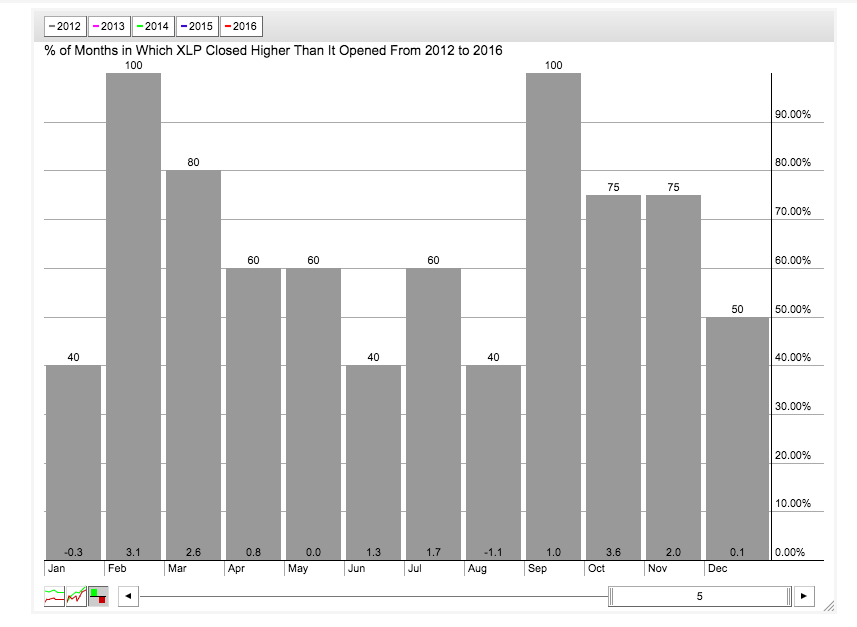
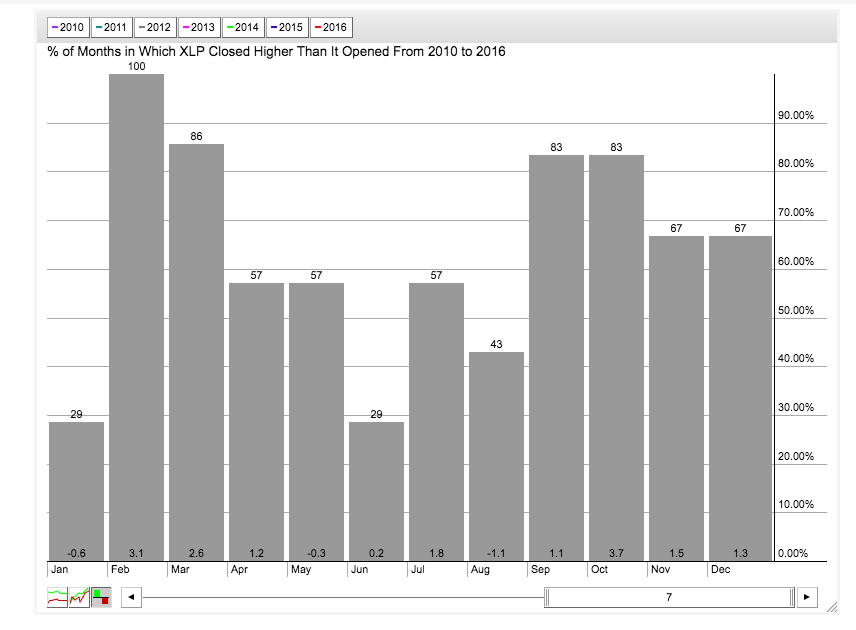
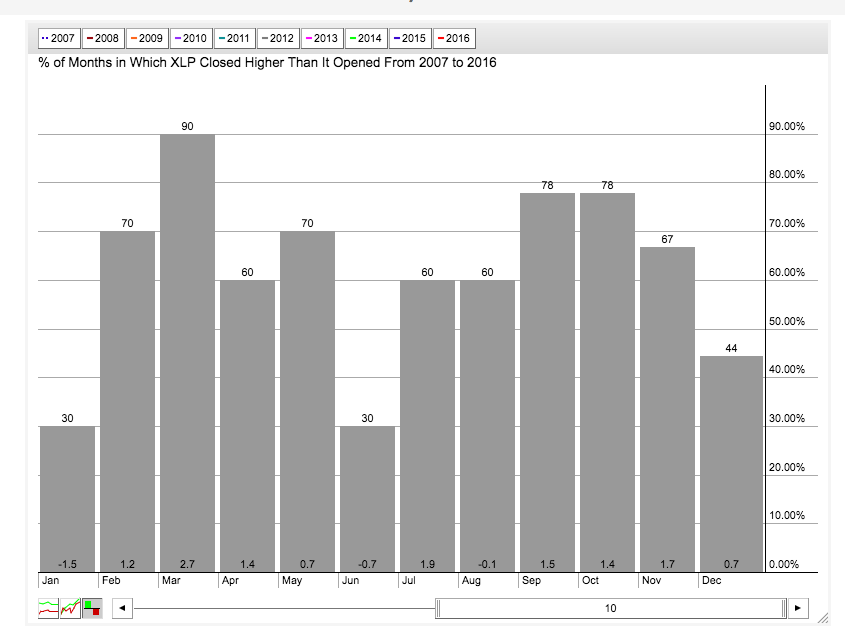
You’ll notice that in three timeframes, seasonality shows us that over the past five years, seven years and ten years, XLP has been consistently weak in the month of June. So your strategy is to put the probabilities to work and increase your allocation of XLP during the time of year it has been weakest historically. In other words, buying on weakness.
Likewise, review the three charts of XLK.

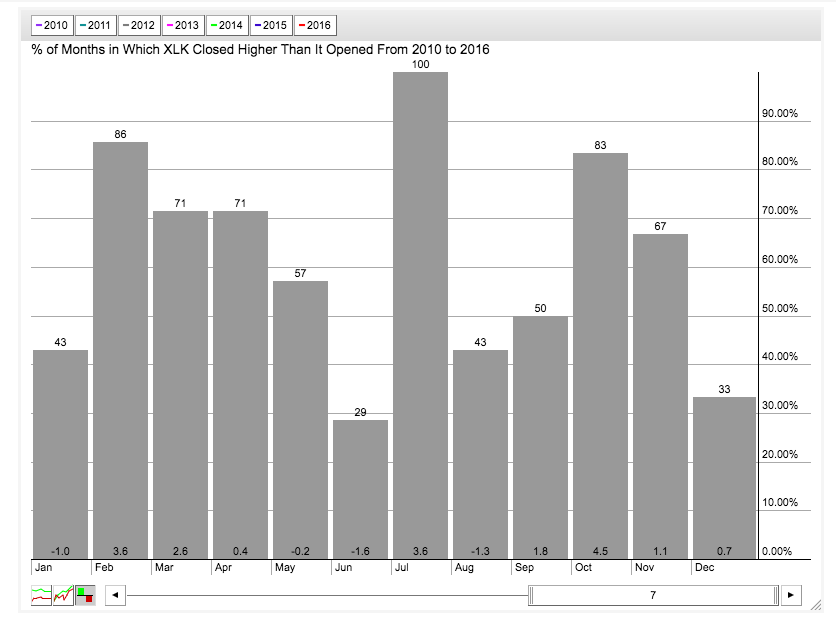
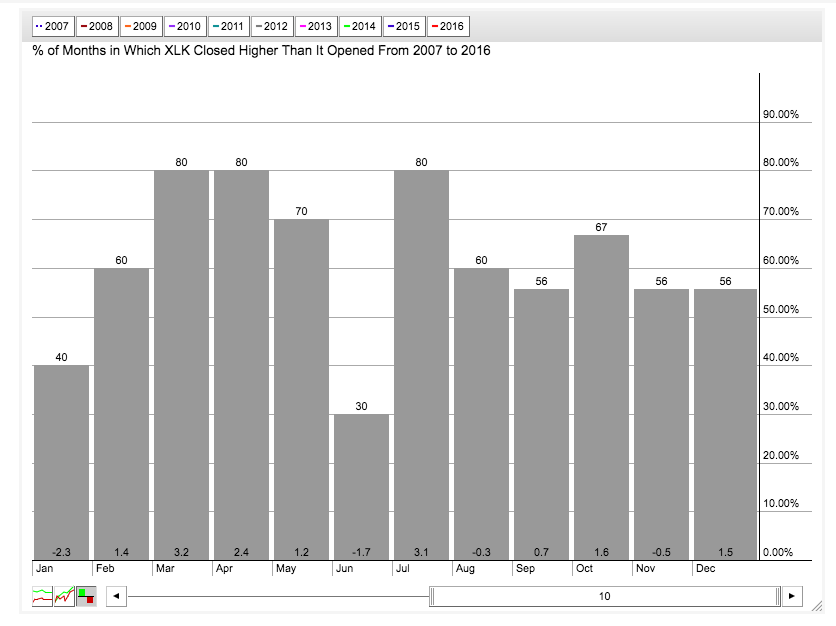 Similarly, since your objective is to lighten up your allocation of XLK, take advantage of market probabilities and sell your position into strength during July which has been a strong month historically over five, seven and ten year timeframes for the Technology SPDRs. Over time, you pay less as a buyer and receive more as a seller when you rebalance your portfolio in this manner. More examples and details are available on our DVDs and in our book, TENSILE TRADING.
Similarly, since your objective is to lighten up your allocation of XLK, take advantage of market probabilities and sell your position into strength during July which has been a strong month historically over five, seven and ten year timeframes for the Technology SPDRs. Over time, you pay less as a buyer and receive more as a seller when you rebalance your portfolio in this manner. More examples and details are available on our DVDs and in our book, TENSILE TRADING.
Trade well; trade with discipline!
- Gatis Roze, MBA, CMT
- Author, Tensile Trading: The 10 Essential Stages of Stock Market Mastery (Wiley, 2016)
- Presenter of the best-selling Tensile Trading DVD seminar
- Presenter of How to Master Your Asset Allocation Profile DVD seminar
- Developer of the StockCharts.com Tensile Trading ChartPack






